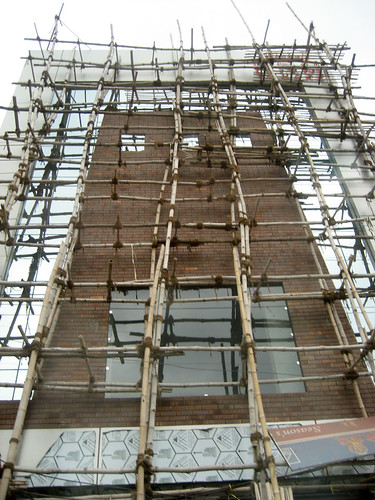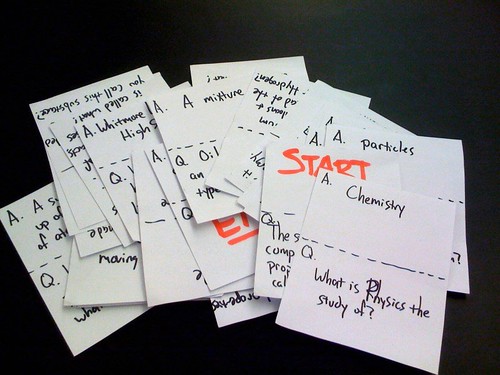I sat down to grade my students' chemical reaction primer artifacts this weekend. It didn't take me long to realize that as a class we weren't done with these projects yet. Clearly I hadn't built in the necessary support for the project's format. I seemed to do pretty well supporting the information (as described previously), but I made a few fatal errors:
- These freshmen have next to no experience citing sources. I required in-text citations and a bibliography. We went over this on day 1, but not too much more than simple reminders since then. Many students did either a bibliography or did in-text citations, but not both.
- Many students gave Google, Yahoo, or Ask.com URLs as their sources for information or images. Again, we went over this on day 1, but with little prior knowledge of citing internet sources it's an easy mistake to make.
- I emphasized strongly that their artifacts should include lots of images related to chemical reactions. I didn't make it clear enough that those pictures needed to match up with the content being described. I can't tell you how many times I had pictures of chemical reactions with no explanation of what reaction it was or why it belonged in that spot.
- I didn't include a review and rewrite of their projects on the schedule. Especially the first time around, they really needed it.
Rookie mistakes, all of them. All easy enough to anticipate. Heck, I've even included reviews and rewrites in similar projects I've done. What was I thinking? Today, I created time for a review and rewrite. I graded the hell out of their artifacts knowing that I would give them time to fix them up.
I was pretty worried about class today. I was handing back rubrics with some very low grades on a project that was worth as much as a full-on test. I was very careful in how I opened the discussion on doing rewrites so as not to cause frustration, despair, or anxiety over the grades on the rubrics I was passing back. Here's what I did:
- Created a positive (perhaps inspirational?) environment. I've been sharing short (~1 minute-ish) and fun videos with my classes all year. I usually don't start class with them, but I wanted to set a positive tone right up front. What better way than with 40 Inspirational Speeches in 2 Minutes?
- Explained myself honestly. Because this was the first time they've done anything like this, their perception of what their finished artifact should look like is different than my perception- and that's okay. I told them it's my fault that I didn't do a better job explaining my high, even ridonculous expectations (went back to an old slide to illustrate), and that I should've scheduled a review and rewrite from the very start.
- Ensured them the grade on the rubric wasn't binding. Once I decided to allow students to revise their artifacts, I toyed with the idea of not going through their artifacts and just explain to the class as a whole the issues I was seeing. I avoided another rookie mistake by diligently going through each student's artifact and grading it like I would if the grade would really count. I wanted each of them to see what specific things were lacking and needed to be fixed. It took 10 hours of grading this weekend. Morally, it was the right decision.
- Maintained a totally positive outlook on their artifacts. I didn't want students to get the idea that I was disappointed or frustrated with their work and was simply having pity on them by giving them a do-over. I want them to know that revisions are a natural and necessary part of the work flow.
Dan Meyer noted that as your teaching expertise grows the technical challenges (i.e. designing and implementing projects, among other things) disappear and the real challenge becomes moral (will you put in the effort to ensure all are successful?). My technical challenges have decreased dramatically since year one. However, I'm not confident there will ever be a time when I don't mess up the technical stuff. What differentiates my mistakes in year seven from mistakes in year one is that now I can fix the mistakes.
_________________________________________________________________
Teaser:
Even though I messed up, it's amazing to me that some students still hit it out of the park. Here are two artifacts that needed little fixing:


 show that they've mastered these ideas. These overviews served as a safety blanket for many students. The artifact was big and scary, and the overviews were just a touch of that style of teaching they'd grown used to over their schooling career.
show that they've mastered these ideas. These overviews served as a safety blanket for many students. The artifact was big and scary, and the overviews were just a touch of that style of teaching they'd grown used to over their schooling career.



